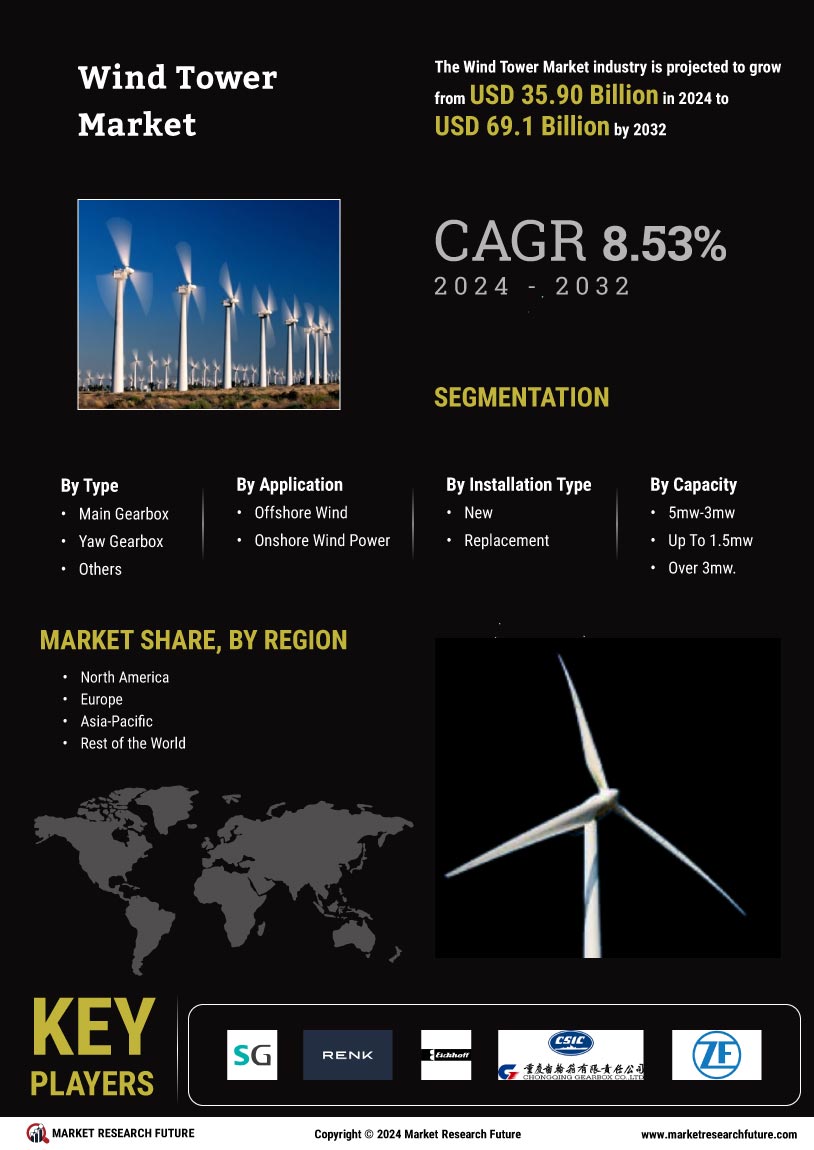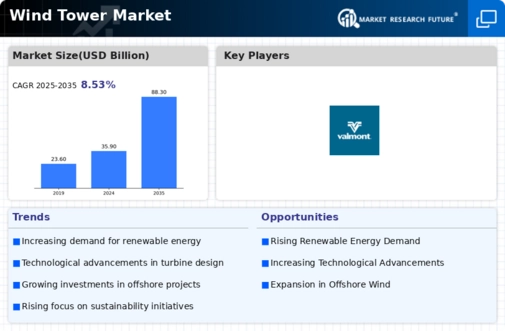Leading market players are investing heavily in R&D to expand their product lines, which will help the Wind Tower Market, grow even more. Market participants are also undertaking a variety of strategic activities to expand their footprint, with important market developments including new product launches, contractual agreements, mergers and acquisitions, higher investments, and collaboration with other organizations. To expand and survive in a more competitive and rising market climate, Wind Tower industry must offer cost-effective items.
Manufacturing locally to minimize operational costs is one of the key business tactics used by manufacturers in the Wind Tower industry to benefit clients and increase the market sector. In recent years, the Wind Tower industry has offered some of the most significant advantages to medicine. Major players in the Wind Tower Market, including Trinity Structural Towers, Inc. (U.S.) . Vestas Wind Systems A/S (Denmark), Valmont Industries, Inc. (US.), Ambau (Germany), and Broadwind Energy (U.S.) and others, are attempting to increase market demand by investing in R&D operations.
GE Renewable Energy is a branch of General Electric that manufactures and provides services. Its headquarters are in Boulogne-Billancourt, France, and it concentrates on the development of renewable energy systems. Wind (onshore and offshore), hydroelectric, and solar (concentrated and photovoltaic) power generation facilities are among its offerings. It is the world's largest manufacturer of wind turbines.
The GE Hydro subsidiary of GE Renewable Energy generates hydroelectricity. This includes designing, manufacturing, and installing equipment for gravity-fed and pumped-storage power plants, as well as enhancements to existing hydroelectric plants. In November 2019, GE Renewable Energy announced the signing of a contract with China Huaneng Group Co. Ltd to construct a 715 MW wind farm in Henan Province, China. According to the deal, GE Renewable Energy will supply the wind farm in Henan Province with 286 units of its 2.5 -132 turbines with 130m soft steel towers.
WEG is a Brazilian corporation that operates globally in the fields of electric engineering, power, and automation technologies. The company, headquartered in Jaraguá do Sul, Brazil, manufactures electric motors, generators, transformers, drives, and coatings. WEG operates in roughly 100 countries and employs approximately 31,000 people (2014). Werner Ricardo Voigt, Eggon Joo da Silva, and Geraldo Werninghaus (electrician, administrator, and mechanic, respectively) founded Eletromotores Jaraguá on September 16, 1961.
Years later, the company changed its name to Eletromotores WEG SA, with WEG standing for the initial letter of each founder's first name. In July 2022, WEG has announced the debut of its latest wind turbine platform, which has a 7 MW capacity and a rotor diameter of 172 meters. This wind turbine is thought to be the largest in use in the Brazilian market. The new design, with its increased power and efficiency, improves output for wind generation projects.













Leave a Comment